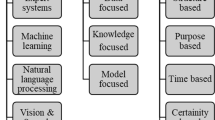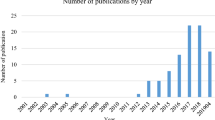Abstract
Lean production and service means to improve the production and service management within an enterprise. Through several management techniques, the waste, the redundant things, and the expenses without added values can be cleared, and the production and service within an enterprise will become smoother, that is, the competitiveness of an enterprise will be enhanced. In this study, the data collected from experiment carried out in Toyota lean service simulation laboratory of China University of Technology are used for analysis. Data mining technique is used to investigate whether the result of lean production and service taken by enterprises can enhance the entire performance of production and service. In this study, Grey relational analysis is performed first and is used to judge whether the data collected in the experiment using lean production and service can enhance performance; then, clustering method is used to classify experimental data into two clusters based on service attitude and dish-serving efficiency; finally, three data mining techniques of Genetic Programming (GP), Back-propagation Artificial Neural Network and logistic regression are used to set up, respectively, lean service performance model and Employee Characteristic Analysis model. From the analysis result, it is shown that the result of lean production and service can indeed enhance the performance of entire production and service; and among the three data mining techniques, GP model has the best classification and forecast capability.












Similar content being viewed by others
References
Womack JP, Jones DT (2006) Lean thinking. Simon & Schuster, New York
Arnheiter E, Maleyeff J (2005) The integration of lean management and six sigma. TQM Mag 17(1):5–18
Su CT, Chiang TL, Chang CM (2006) Improving service quality by capitalizing on an integrated lean six sigma methodology. Int J Six Sigma Compet Advant 2(1):1–22
Chen JC, Lee H, Chiu S, Tseng B (2011) Productivity improvement with lean production in glove manufacturing industry. Key Eng Mater 450:247–250
Deng J (1982) The control problems of grey system. Syst Control Lett 5:288–294
Kuo YH, Huang ST (2007) The association of grey relational analysis and data envelopment analysis method to evaluate the enterprise performance of steel industry, 43rd annual meeting and 13th nationwide quality management forum of Chinese Society for Quality
Yen JH, Wang SA (2005) Evaluation of operational performance for domestic financial holding companies using the entropy theory and grey relational analysis, 2005 third “Management thinking and practice” academic forum
Lin SY (2004) Evaluation of business reputation in information service industry—an application of grey relational analysis. J Inf Technol Soc 2:79–95
Koza JR (1992) Genetic programming: on the programming of computers by means of natural selection. MIT Press, Cambridge
Koza JR (1992) Genetic programming II: automatic discovery of reusable programs. MIT Press, Cambridge
Holland J (1975) Adaptation in natural and artificial systems. University of Michigan Press, Ann Arbor, MI
Noe TH, Wang J (1997) The self-evolving logic of financial claim prices. Genetic algorithms genetic programming computational finance, pp 249–262
Kaboudan M (2000), Using GP forecasts to enhance profitable trading of stocks. In: Proceedings of the 5th joint conference on information science, pp 925–928
Chen SH, Chie BT (2006) Automatic management of innovation: the application of evolutional computation method. J Technol Manag 11(2):97–126
Jan JF (1998) Genetic programming for classification of remote sensing data. Taiwan J For Sci 13(2):109–118
Pan WT (2010) The use of genetic programming for the construction of a financial management model in an enterprise. Int J Appl Intell, Published Online: 23 Oct 2010
Wen KL, Chang-Chien SK, Yeh CK, Wang CW, Lin HS (2006) Apply MATLAB in grey system theory. Chuan Hwa Book CO., LTD, Taipei
Yeh YC (2001) The model application and practice of artificial neural network. Scholars Books Co., Ltd, Taipei
Liu L, Xu W (2006) UOFC-AINet: a fuzzy immune network for unsupervised optimal clustering, cimca, pp. 196, International conference on computational intelligence for modelling control and automation and international conference on intelligent agents web technologies and international commerce (CIMCA’06)
Bradley AP (1997) The use of the area under the ROC curve in the evaluation of machine learning algorithms. Pattern Recognit 30(7):1145–1159
Hand DJ, Till RJ (2001) A simple generalisation of the area under the ROC curve to multiple class classification problems. Mach Learn 45(2):171–186
Author information
Authors and Affiliations
Corresponding author
Rights and permissions
About this article
Cite this article
Ming-Te, L., Kuo-Chung, M.A. & Pan, WT. Using data mining technique to perform the performance assessment of lean service. Neural Comput & Applic 22, 1433–1445 (2013). https://doi.org/10.1007/s00521-012-0848-y
Received:
Accepted:
Published:
Issue Date:
DOI: https://doi.org/10.1007/s00521-012-0848-y




